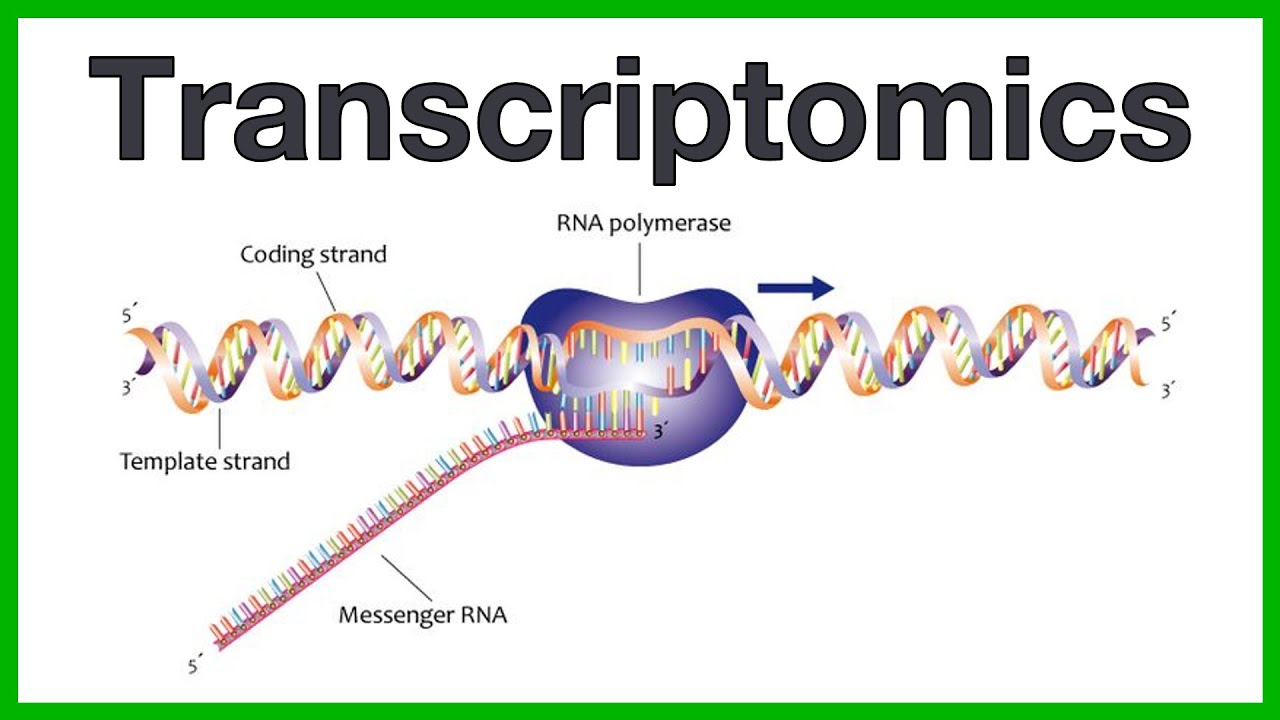
Transcriptomics is a fascinating field of study that has revolutionized our understanding of gene expression and molecular biology. By analyzing the transcripts or RNA molecules produced by genes, transcriptomics provides valuable insights into how genes are regulated and how they contribute to various biological processes.
In this article, we will delve into the intriguing world of transcriptomics and uncover 17 surprising facts that you may not be aware of. From the discovery of alternative splicing to the role of non-coding RNAs, we will explore the cutting-edge research and breakthroughs that have shaped this field. So, buckle up and get ready to be amazed by the wonders of transcriptomics!
Key Takeaways:
- Transcriptomics helps scientists understand how genes work and how they can be used to improve human health. It’s like a secret code that reveals the inner workings of our cells!
- Transcriptomics is like a treasure map for researchers, leading to new discoveries about genes and their roles in diseases, development, and the environment. It’s like solving a fascinating puzzle of life!
Transcriptomics is the study of all the RNA molecules present in a cell.
Transcriptomics is a powerful tool that allows scientists to examine the expression levels of genes and understand how they are regulated. By analyzing the RNA transcripts produced by the genes, researchers can gain insight into various biological processes.
It provides a snapshot of gene expression.
Transcriptomics offers a way to measure the abundance of specific mRNA molecules in a cell at a particular time. This information helps researchers understand which genes are active and producing proteins, giving valuable insights into cellular processes.
Transcriptomics can reveal novel genes.
Through transcriptomics, scientists have discovered new genes that were previously unknown. By identifying and characterizing these novel genes, researchers can expand our understanding of the complex genetic landscape.
It enables the study of alternative splicing.
Transcriptomics allows scientists to investigate alternative splicing, a process where different combinations of exons within a gene can be included or excluded in the final mRNA molecule. This adds another layer of complexity to gene expression regulation.
Transcriptomics helps in identifying biomarkers.
By comparing the transcriptomes of different cell types or disease states, scientists can identify unique patterns of gene expression that serve as biomarkers. These biomarkers can be used for diagnostic purposes or to monitor the efficacy of treatments.
It aids in drug target discovery.
Transcriptomics plays a crucial role in identifying potential drug targets. By analyzing the gene expression profiles of diseased cells or tissues, researchers can pinpoint genes that are overexpressed or underexpressed and develop targeted therapies.
Transcriptomics can unravel the mechanisms of gene regulation.
Studying the transcriptome can shed light on the complex mechanisms that control gene expression. It helps in understanding how transcription factors, epigenetic modifications, and other factors influence the activity of genes.
It allows the study of non-coding RNA.
Transcriptomics has revealed the existence of various non-coding RNA molecules, which were previously considered “junk” or non-functional. These non-coding RNAs have been found to have important roles in gene regulation and other cellular processes.
Transcriptomics can provide insights into developmental processes.
By analyzing transcriptomic data across different stages of development, scientists can gain a comprehensive understanding of gene expression changes that occur during embryogenesis and tissue differentiation.
It enables the study of gene networks.
Transcriptomics data can be used to construct gene regulatory networks, revealing how different genes interact and influence each other’s expression. This information is valuable for understanding complex biological processes and identifying key players in cellular pathways.
Transcriptomics is widely used in cancer research.
By comparing the transcriptomes of cancer cells with normal cells, researchers can identify genes that are dysregulated in cancer. This information helps in understanding the underlying mechanisms of cancer development and can lead to the development of targeted therapies.
It can be used to study environmental responses.
Transcriptomics allows scientists to investigate how organisms respond to changes in their environment. By analyzing gene expression patterns, researchers can identify the genes that are involved in these responses and gain insights into the adaptive mechanisms.
Transcriptomics can be used to study infectious diseases.
By analyzing the transcriptomes of pathogens and host cells during infection, scientists can gain insights into the molecular mechanisms of infection, host-pathogen interactions, and the host immune response.
It helps in understanding the impact of genetic variations.
Transcriptomics can provide valuable information about how genetic variations, such as single nucleotide polymorphisms (SNPs), affect gene expression. This knowledge is crucial for understanding the genetic basis of diseases and personalized medicine.
Transcriptomics is advancing with single-cell analysis.
Recent advancements in transcriptomics techniques allow the study of gene expression at the single-cell level. This provides a deeper understanding of cellular heterogeneity and opens up new avenues for research in developmental biology, neurobiology, and immunology.
It is a rapidly evolving field.
Transcriptomics techniques and technologies continue to advance rapidly, making it an exciting and dynamic field of research. New methods and approaches are constantly being developed to improve the sensitivity, accuracy, and scalability of transcriptomic analysis.
Transcriptomics has implications beyond biology.
Transcriptomics has the potential to revolutionize various fields beyond biology, including medicine, agriculture, and environmental science. Its applications in understanding gene expression and regulation have wide-ranging implications for human health, food security, and conservation efforts.
Conclusion
Transcriptomics is a fascinating field that has revolutionized our understanding of gene expression and regulation. Through the study of transcriptomes, researchers have uncovered numerous surprising facts that have paved the way for advancements in various branches of biology and medicine.
We have explored 17 of these remarkable facts about transcriptomics, ranging from the discovery of non-coding RNAs and alternative splicing to the role of transcriptomics in personalized medicine and cancer research. These findings highlight the complexity and versatility of the transcriptome, providing valuable insights into gene function and disease mechanisms.
As technology continues to advance and our understanding of transcriptomics deepens, we can expect even more astonishing discoveries in the future. Transcriptomics will undoubtedly play a crucial role in unlocking the mysteries of gene expression and expanding our knowledge of the intricate mechanisms that drive life itself.
FAQs
1. What is transcriptomics?
Transcriptomics is the study of the transcriptome, which refers to the complete set of RNA molecules produced by a cell, tissue, or organism. It involves the analysis of gene expression, including the identification and quantification of various RNA molecules such as messenger RNA (mRNA), non-coding RNA, and splice variants.
2. How is transcriptomics different from genomics?
While genomics focuses on the study of an organism’s entire genome, transcriptomics specifically examines the subset of genes that are actively transcribed and expressed as RNA molecules. Transcriptomics provides valuable insights into gene expression patterns and regulatory mechanisms in various biological processes and conditions.
3. What techniques are used in transcriptomics?
Transcriptomics employs a range of techniques, including RNA sequencing (RNA-seq), microarray analysis, and quantitative reverse transcription polymerase chain reaction (qRT-PCR). These methods allow researchers to examine the abundance and diversity of RNA molecules in a sample, providing a snapshot of gene expression patterns.
4. How is transcriptomics used in personalized medicine?
Transcriptomics plays a crucial role in personalized medicine by providing valuable insights into individual variations in gene expression. By analyzing transcriptomic data, researchers can identify disease biomarkers, predict drug responses, and develop targeted treatments tailored to an individual’s unique genetic profile.
5. How does transcriptomics contribute to cancer research?
Transcriptomics has significantly advanced our understanding of cancer biology. It helps identify gene expression signatures associated with specific cancer types, unravel the molecular mechanisms underlying tumor progression, and discover potential therapeutic targets. Transcriptomic data also aids in the development of prognostic markers and the prediction of treatment outcomes.
6. Can transcriptomics be applied to non-human organisms?
Absolutely! Transcriptomics is a versatile tool that can be applied to study gene expression in various organisms, including animals, plants, bacteria, and viruses. It enables researchers to investigate the molecular processes and regulatory networks that drive the diverse array of life on our planet.
Was this page helpful?
Our commitment to delivering trustworthy and engaging content is at the heart of what we do. Each fact on our site is contributed by real users like you, bringing a wealth of diverse insights and information. To ensure the highest standards of accuracy and reliability, our dedicated editors meticulously review each submission. This process guarantees that the facts we share are not only fascinating but also credible. Trust in our commitment to quality and authenticity as you explore and learn with us.


